Abstract
Cross-trait resemblance between body fat and blood pressure (BP) was examined among families in the Québec Family Study by using a bivariate familial correlation model assessing both intraindividual (e.g., comparison of father's body fat with his own BP) and interindividual (e.g., comparison of father's body fat with son's BP) cross-trait correlations. Each of six body-fat measures-(i) percent body fat, (ii) body-mass index, (iii) the sum of six skinfolds, (iv) the ratio of the sum of six skinfolds to total fat mass, (v) the ratio of the trunk skinfold sum to the extremity skinfold sum, and (vi) the regression of the trunk-extremity skinfold ratio on the sum of six skinfolds--was analyzed separately with systolic BP and with diastolic BP. Results showed that (1) upper-body fat was the strongest interindividual correlate of BP (especially the correlation of trunk-extremity ratio with diastolic BP), suggesting shared pleiotropic genetic and/or common familial environmental effects; (2) summary body-fat measures either were inconsistent (in the case of both percent body fat and sum of six skinfolds) or gave no evidence of interindividual cross-trait resemblance with BP (in the case of body-mass index); and (3) intraindividual resemblance between the sum of six skinfolds and BP largely vanished once the skinfold sum was adjusted for fat mass, suggesting that the intraindividual association may be mediated largely by the absolute amount of subcutaneous fat rather than by the subcutaneous proportion. Finally, the magnitude of the spouse resemblance for the trunk-extremity ratio with diastolic BP suggests that a significant proportion of the resemblance may be due to environmental influences. In summary, our investigation confirms a heritable link between BP and truncal-abdominal fat as predicted by the metabolic-syndrome hypothesis. That this result is obtained in primarily normotensive, nonobese families, suggests the connection involves normal metabolic paths.
Full text
PDF
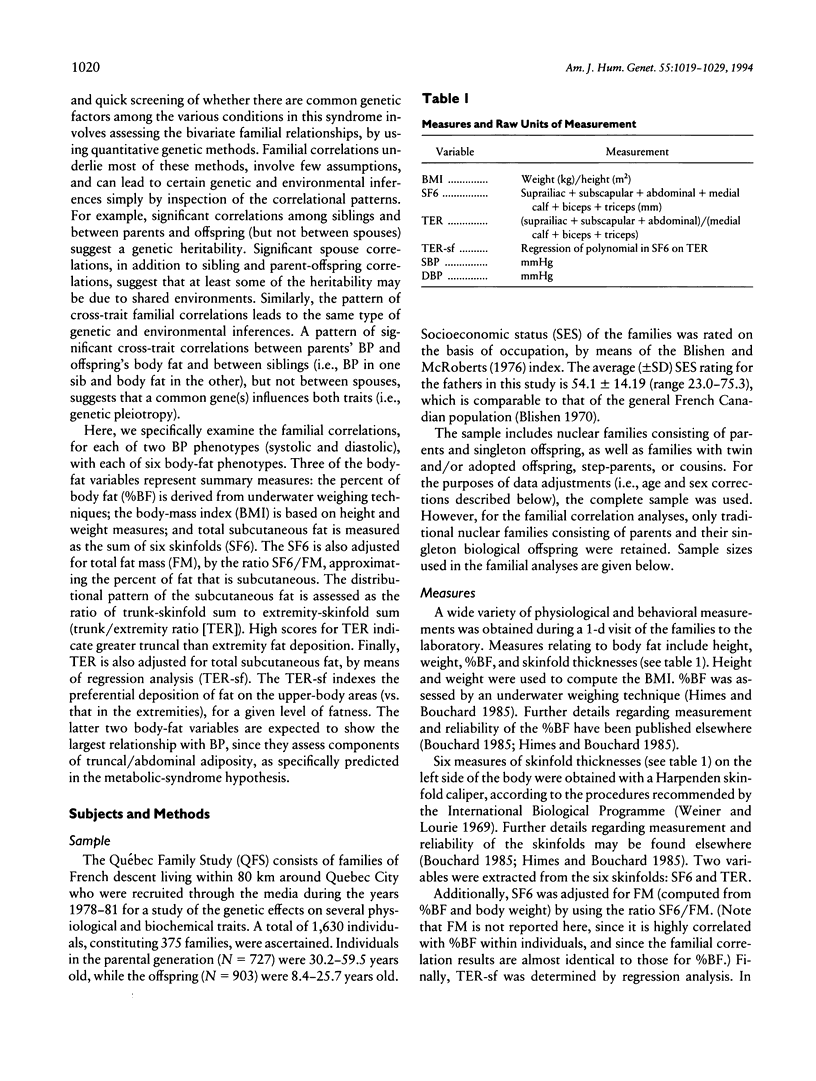
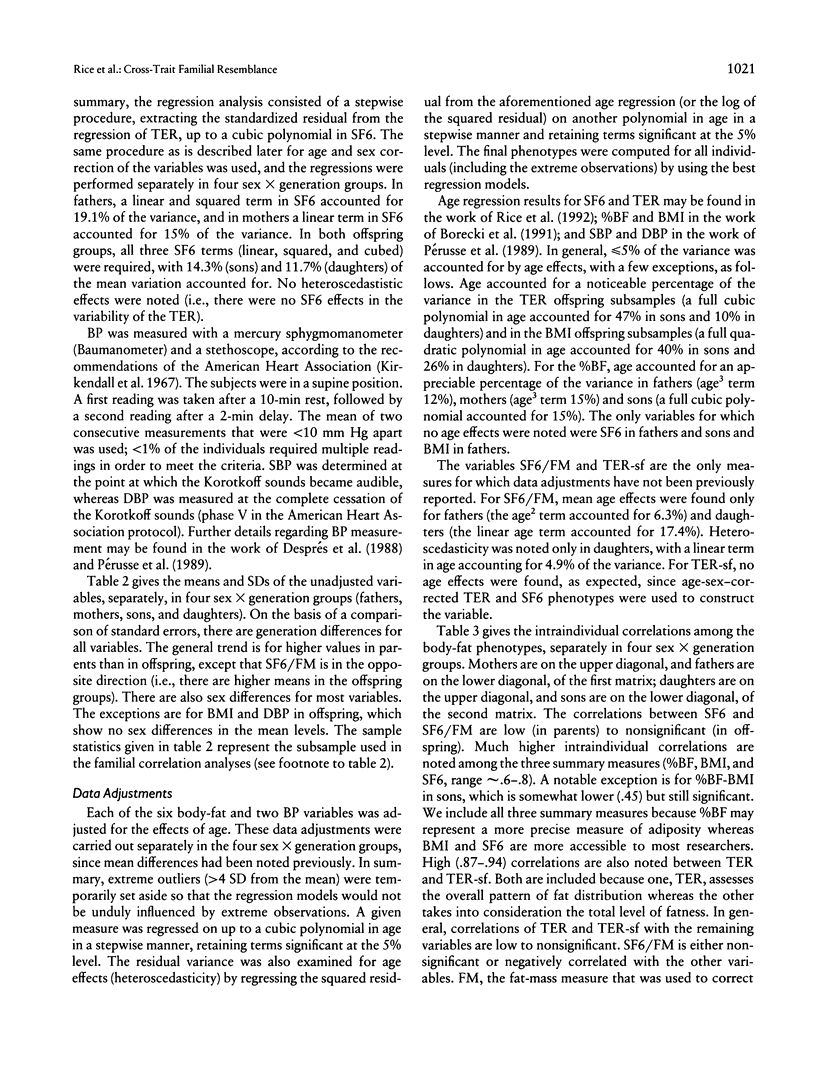



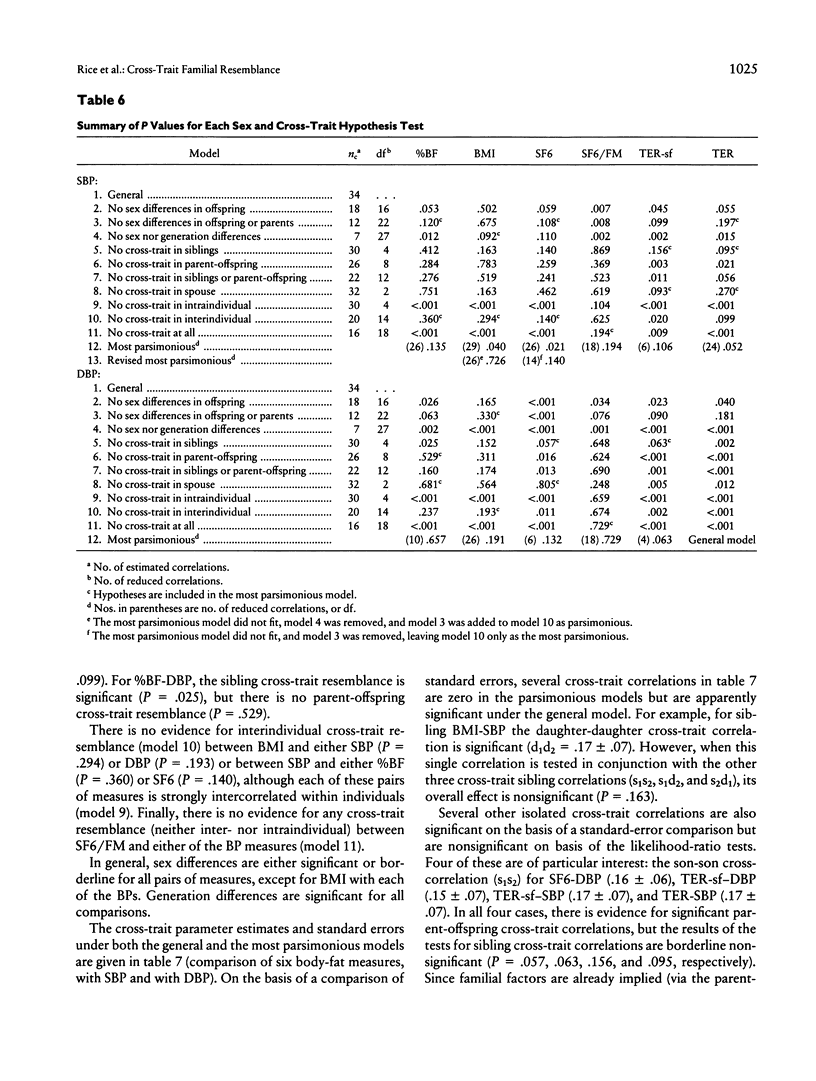

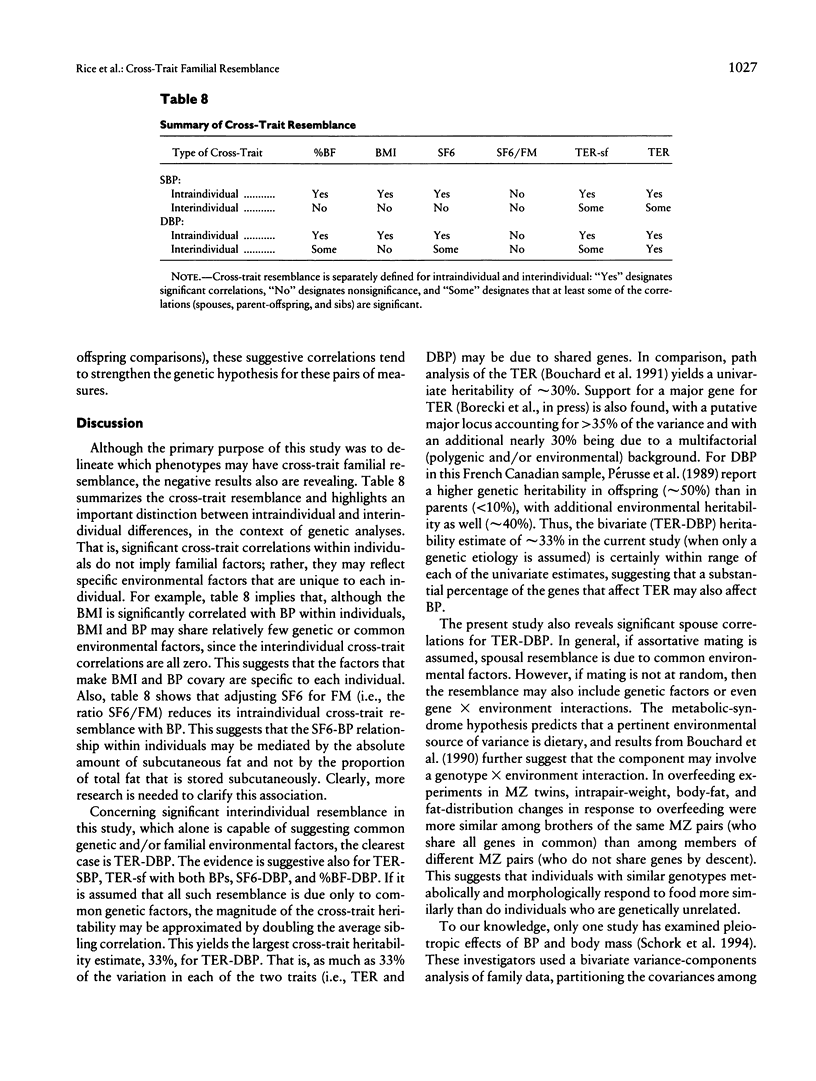
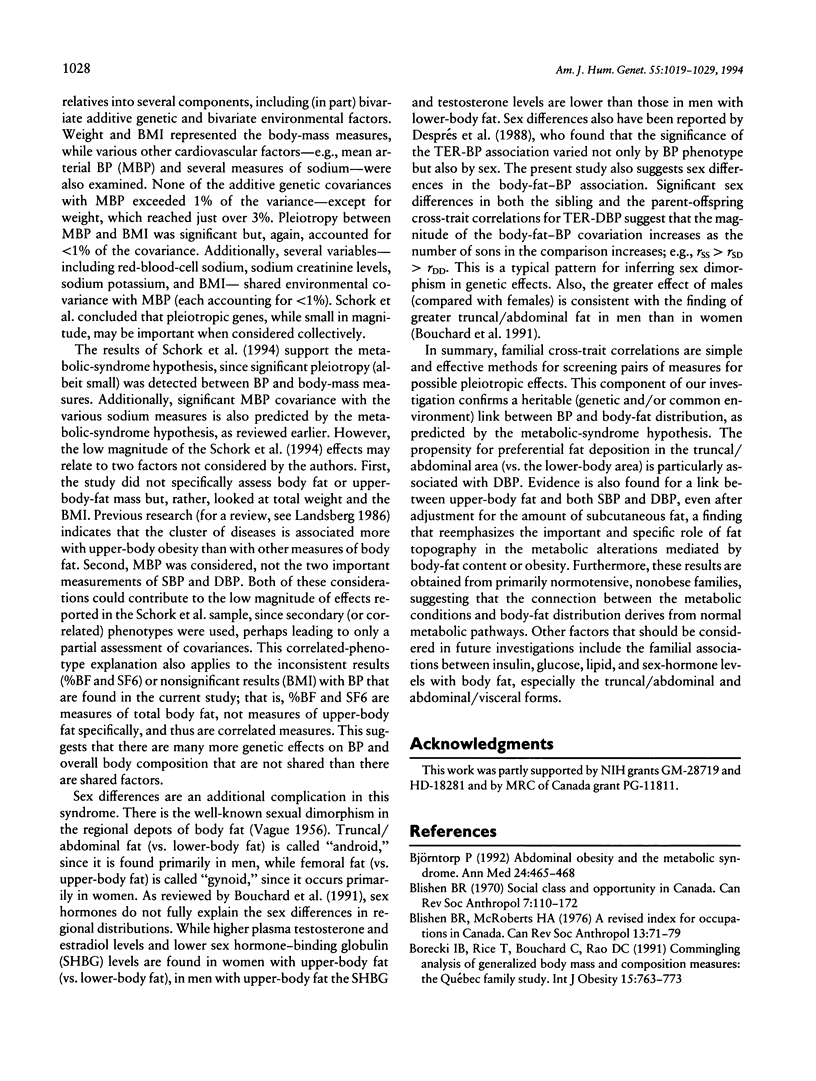
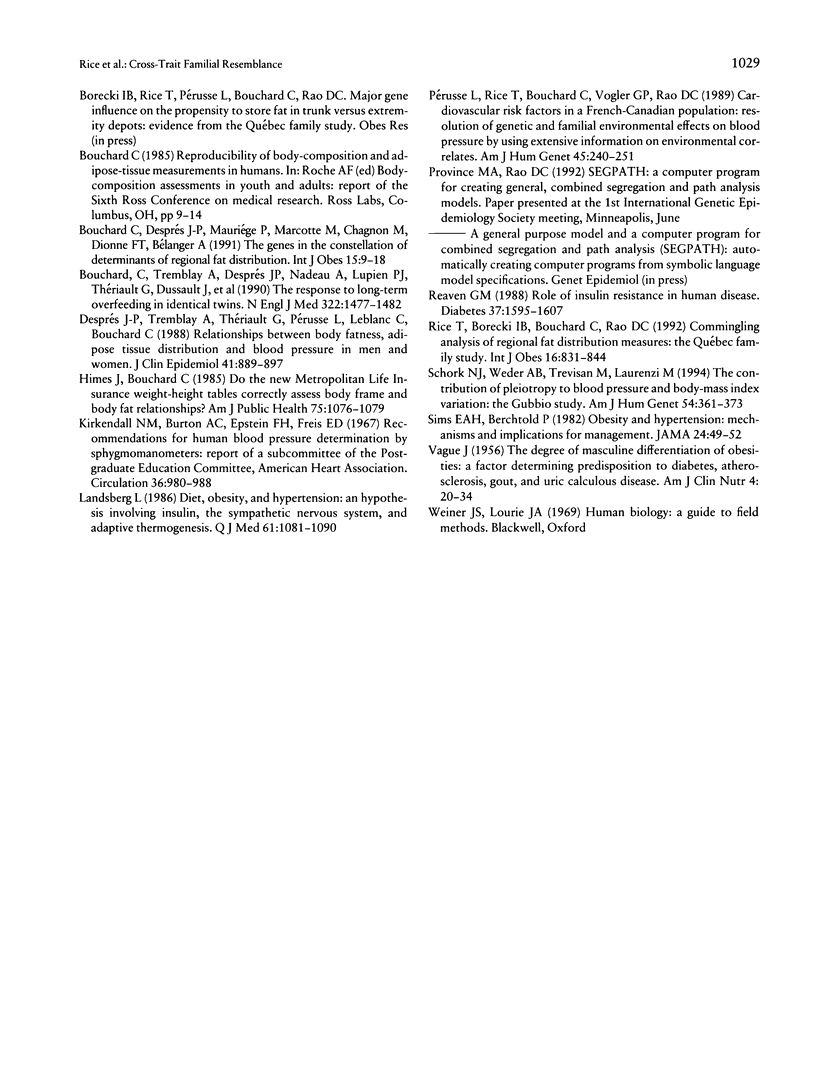
Selected References
These references are in PubMed. This may not be the complete list of references from this article.
- Björntorp P. Abdominal obesity and the metabolic syndrome. Ann Med. 1992 Dec;24(6):465–468. doi: 10.3109/07853899209166997. [DOI] [PubMed] [Google Scholar]
- Bouchard C., Després J. P., Mauriège P., Marcotte M., Chagnon M., Dionne F. T., Bélanger A. The genes in the constellation of determinants of regional fat distribution. Int J Obes. 1991 Sep;15 (Suppl 2):9–18. [PubMed] [Google Scholar]
- Bouchard C., Tremblay A., Després J. P., Nadeau A., Lupien P. J., Thériault G., Dussault J., Moorjani S., Pinault S., Fournier G. The response to long-term overfeeding in identical twins. N Engl J Med. 1990 May 24;322(21):1477–1482. doi: 10.1056/NEJM199005243222101. [DOI] [PubMed] [Google Scholar]
- Després J. P., Tremblay A., Thériault G., Pérusse L., Leblanc C., Bouchard C. Relationships between body fatness, adipose tissue distribution and blood pressure in men and women. J Clin Epidemiol. 1988;41(9):889–897. doi: 10.1016/0895-4356(88)90106-0. [DOI] [PubMed] [Google Scholar]
- Himes J. H., Bouchard C. Do the new Metropolitan Life Insurance weight-height tables correctly assess body frame and body fat relationships? Am J Public Health. 1985 Sep;75(9):1076–1079. doi: 10.2105/ajph.75.9.1076. [DOI] [PMC free article] [PubMed] [Google Scholar]
- Kirkendall W. M., Burton A. C., Epstein F. H., Freis E. D. Recommendations for human blood pressure determination by sphygmomanometers. Circulation. 1967 Dec;36(6):980–988. doi: 10.1161/01.cir.36.6.980. [DOI] [PubMed] [Google Scholar]
- Landsberg L. Diet, obesity and hypertension: an hypothesis involving insulin, the sympathetic nervous system, and adaptive thermogenesis. Q J Med. 1986 Dec;61(236):1081–1090. [PubMed] [Google Scholar]
- Pérusse L., Rice T., Bouchard C., Vogler G. P., Rao D. C. Cardiovascular risk factors in a French-Canadian population: resolution of genetic and familial environmental effects on blood pressure by using extensive information on environmental correlates. Am J Hum Genet. 1989 Aug;45(2):240–251. [PMC free article] [PubMed] [Google Scholar]
- Reaven G. M. Banting lecture 1988. Role of insulin resistance in human disease. Diabetes. 1988 Dec;37(12):1595–1607. doi: 10.2337/diab.37.12.1595. [DOI] [PubMed] [Google Scholar]
- Rice T., Borecki I. B., Bouchard C., Rao D. C. Commingling analysis of regional fat distribution measures: the Québec family study. Int J Obes Relat Metab Disord. 1992 Oct;16(10):831–844. [PubMed] [Google Scholar]
- Schork N. J., Weder A. B., Trevisan M., Laurenzi M. The contribution of pleiotropy to blood pressure and body-mass index variation: the Gubbio Study. Am J Hum Genet. 1994 Feb;54(2):361–373. [PMC free article] [PubMed] [Google Scholar]
- Sims E. A., Berchtold P. Obesity and hypertension. Mechanisms and implications for management. JAMA. 1982 Jan 1;247(1):49–52. [PubMed] [Google Scholar]
- VAGUE J. The degree of masculine differentiation of obesities: a factor determining predisposition to diabetes, atherosclerosis, gout, and uric calculous disease. Am J Clin Nutr. 1956 Jan-Feb;4(1):20–34. doi: 10.1093/ajcn/4.1.20. [DOI] [PubMed] [Google Scholar]


